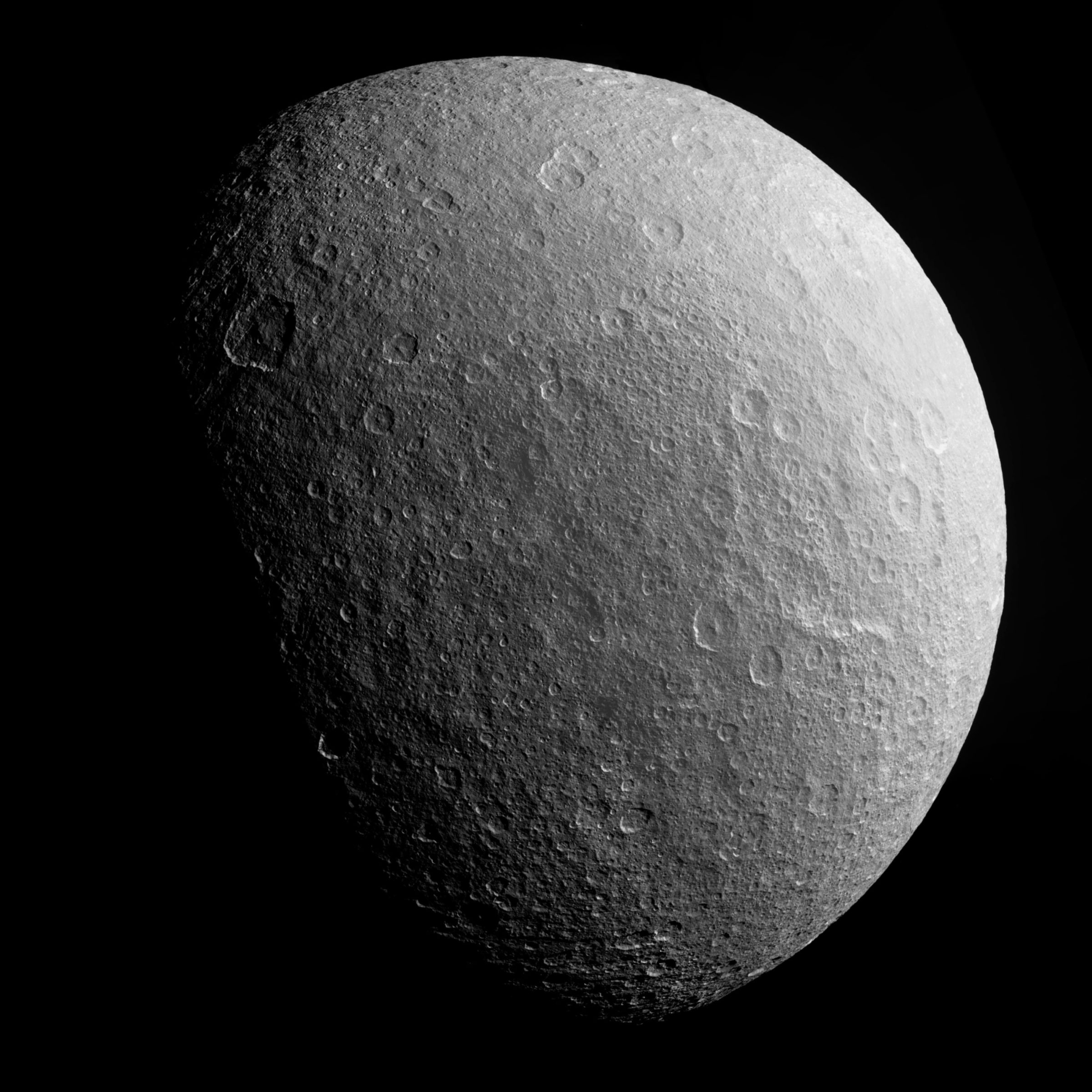Emily Lakdawalla • Feb 12, 2015
Cassini begins a year of icy moon encounters with a flyby of Rhea
At last! Cassini is orbiting in Saturn's ring plane again. I do enjoy the dramatic photographs of Saturn's open ring system that Cassini can get from an inclined orbit, and we won't be getting those again for another year. But with an orbit close to the ring plane, Cassini can repeatedly encounter Saturn's icy moons, and icy moon flybys are my favorite thing about the Cassini mission.
On February 9, Cassini's trajectory took it within 47,000 kilometers of Rhea. During the encounter Cassini acquired two very large mosaics on a gibbous Rhea, capturing its heavily cratered surface in beautiful detail. This is the first icy moon flyby of the second equatorial phase of the extended-extended mission. It is also the last close encounter that Cassini will ever have with Rhea. Now, we shouldn't be too sad about that, because of all of Saturn's non-Titan moons, Rhea is the one that Cassini has already done the best job of imaging. It's the second largest moon and since it is the one next closest to Saturn from Titan, Cassini's orbit has taken it relatively close to Rhea relatively frequently, providing plenty of imaging opportunities. I just searched, and there are already 5,219 images aimed at Rhea in the Cassini data archives, among them several big mosaics shot during similarly close encounters. Still, it's sad to know that we've now left Rhea behind for good.
To better understand the data that Cassini gathered during the most recent flyby, I sorted it all out into a single image. You can see that there are three global views from the wide-angle camera, and two large mosaics. The wide-angle views were shot only using a clear filter. The mosaics were shot at full resolution through a clear filter, then at half-resolution through ultraviolet, green, and infrared filters. A small area near Rhea's equator was imaged using two more filters, a longer-wavelength infrared and a blue filter, because there is an especially colorful feature there of interest to scientists.
What can you do with these pictures? Glen Nagle threw the three wide-angle views together into a simple animation, showing Cassini's point of view on Rhea shifting as it flew past the moon.

The mosaics are daunting. With a little bit of help from Microsoft Image Composite Editor I assembled the smaller of the two. I had to fudge the upper right edge of the disk a little bit because Cassini's point of view had shifted considerably in the time separating the two frames that meet there. But I think it looks pretty good.

This mosaic could be assembled in color -- you'd have to make the color composites of the ultraviolet, green, and infrared filter images, and then overlay it on the higher-resolution clear-filter data, and then mosaic the eleven frames together. I didn't try; I figure it's not worth the effort until I can get my hands on the archival science data in a year or so. Fortunately, there are professionals working on that challenge; Jason Perry (who works for the Cassini imaging team) said on Twitter that he was working on the larger of the two mosaics, and will probably eventually assemble it in color. I look forward to seeing it!
Support our core enterprises
Your support powers our mission to explore worlds, find life, and defend Earth. You make all the difference when you make a gift. Give today!
Donate

 Explore Worlds
Explore Worlds Find Life
Find Life Defend Earth
Defend Earth


